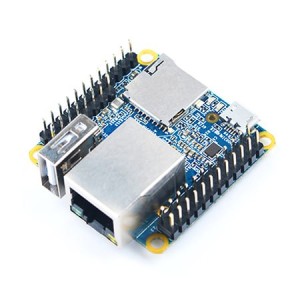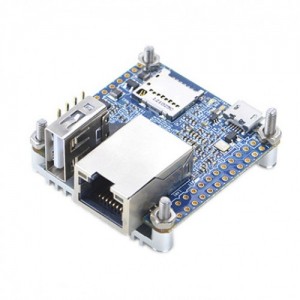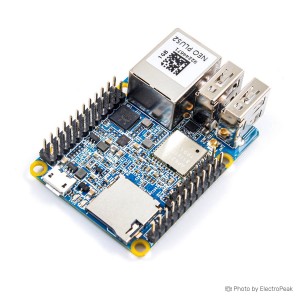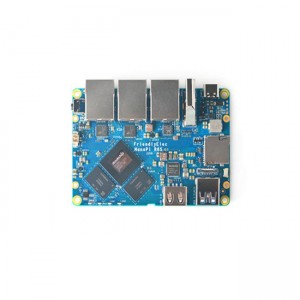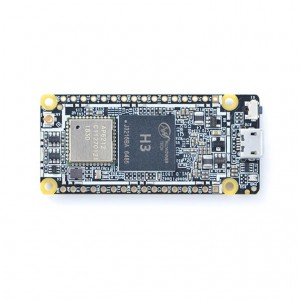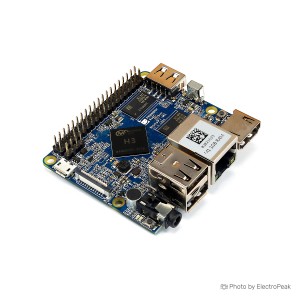- NanoPi Heatsink: A lightweight aluminum heatsink with adhesive backing for easy installation, designed to dissipate heat and maintain optimal operating temperatures, especially useful for high-performance models.
- NanoPi Power Supply: This accessory provides a stable and regulated power source for Nano Pi boards, featuring voltage and current specifications compatible with Nano Pi requirements, ensuring reliable operation and preventing potential issues related to inadequate power supply. It's worth noting that you can use various types of phone chargers for this purpose, as long as the charger delivers a current above the requirements of your Nano Pi model. You can find suitable power supplies and chargers for Nano Pi boards through this link, offering a convenient way to power your Nano Pi and support its optimal performance.
- NanoPi Case: Custom-designed cases with precise cutouts for ports and connectors, offering protection for the Nano Pi board and facilitating neat and organized installations. It enhances the aesthetic appeal and safeguarding of the Nano Pi, suitable for various projects.
- NanoPi Display Module: Compact display modules with appropriate interfaces for Nano Pi boards, adding a visual interface to Nano Pi projects and enabling display functionality. This accessory is useful for projects requiring user interaction or those with a display output requirement.
NanoPi Boards
NanoPi Boards
NanoPi is a series of single-board computers (SBCs) designed for various embedded applications. Developed by FriendlyElec, these compact and powerful boards offer a range of features suitable for DIY projects, IoT applications, and more.
Price of NanoPi Boards
The cost of NanoPi boards varies depending on the model and specifications. Prices are influenced by factors such as processing power, connectivity options, and additional features. When considering a NanoPi, assess your project's requirements against your budget to make an informed decision.
Tips for Buying NanoPi
When purchasing a NanoPi board, consider factors such as the processing capabilities, available interfaces, and community support. Choose a model that aligns with your project's needs and has good documentation and community forums for support.
Popular Models of NanoPi Boards
- NanoPi Neo4: Compact and powerful, featuring a hexa-core processor and multiple connectivity options.
- NanoPi M4V2: High-performance SBC with a quad-core processor, GPU, and various expansion interfaces.
- NanoPi R2S: Designed for networking applications, featuring dual Gigabit Ethernet ports and a quad-core processor.
- NanoPi NEO2: Compact SBC with Gigabit Ethernet and USB, designed for applications with limited space.
- NanoPi Duo2: Dual-core SBC with WiFi and Bluetooth, ideal for compact IoT projects.
- NanoPi M3: Octa-core SBC with robust computing power and multimedia capabilities.
- NanoPi A64: Entry-level SBC with a quad-core processor, suitable for basic computing tasks.
- NanoPi NEO Core2: Compact module with WiFi and Bluetooth, perfect for space-constrained projects.
- NanoPi R4S: Quad-core SBC with dual Gigabit Ethernet ports, designed for networking applications.
- NanoPi M1 Plus: Feature-rich SBC with WiFi, Bluetooth, and multiple interfaces for diverse projects.
- NanoPi R6S: The NanoPi R6S offers impressive features, including a hexa-core processor and multiple expansion options.
- NanoPi NEO Plus2: Compact SBC with Gigabit Ethernet, WiFi, and Bluetooth support, suitable for various projects.
- NanoPi M1: An entry-level model with essential features for basic projects and experimentation.
- NanoPi NEO Air: Compact SBC with WiFi and Bluetooth, designed for applications with limited space.
What are important NanoPi Accessories?
What operating systems are compatible with Nano Pi?
Nano Pi supports various operating systems, including Ubuntu, Debian, Armbian, and more. Choose based on your project requirements. To learn how to install operating systems on NanoPi, you can check out this link.
What programming languages are supported on Nano Pi?
Nano Pi supports popular programming languages like Python, C, and more. Choose the language that best suits your application and development preferences.
Can Nano Pi run headless (without a display)?
Nano Pi is capable of running headless, meaning it can operate without a connected display. This makes it suitable for applications where remote access and control are preferred, enhancing its usability for IoT, server, and other headless scenarios.
In headless mode, you can connect to Nano Pi remotely using SSH for command-line access, or VNC for graphical interfaces. Some models support web-based interfaces, and a serial console via UART is an alternative option with a USB-to-Serial adapter. Each Nano Pi may have unique features, so refer to the model's documentation for specific remote connectivity instructions.
How do I connect Nano Pi to the internet?
Nano Pi can connect to the internet through various methods. Depending on the model, you can use either an Ethernet connection or Wi-Fi. Configuring the network settings on Nano Pi allows you to establish internet connectivity, enabling communication and data exchange.
Is it possible to overclock Nano Pi for increased performance?
While it's technically possible to overclock Nano Pi for enhanced performance, users should exercise caution. Overclocking may lead to increased heat generation and potential stability issues. Following recommended guidelines and monitoring temperatures helps ensure a safe overclocking experience.
What are the storage options for Nano Pi?
Nano Pi commonly utilizes microSD cards for storage, providing a convenient and removable solution. Some models may offer additional storage interfaces such as eMMC for faster and more reliable storage options, particularly in applications with higher storage demands.
Can Nano Pi be used for media center applications?
Absolutely! Nano Pi can serve as a capable media center with the right software and configuration. Users can install media center applications compatible with Nano Pi, turning it into a versatile multimedia hub for streaming and playback.
What types of projects are suitable for Nano Pi?
Nano Pi's versatility makes it suitable for a broad range of projects. It can be employed in IoT applications, media centers, servers, home automation, and more. The choice of project depends on the specific capabilities and features of the Nano Pi model being used.
Is Nano Pi compatible with Arduino IDE?
Nano Pi can be interfaced with Arduino IDE, allowing users to leverage the extensive Arduino ecosystem. This compatibility enables the use of Arduino libraries and sketches, making it easier to integrate Nano Pi into projects that involve both Arduino and Nano Pi components.
Can I use Nano Pi for machine learning applications?
Yes, Nano Pi can be utilized for machine learning applications. With suitable software frameworks and libraries compatible with ARM architecture, users can explore machine learning on Nano Pi for tasks such as image recognition, classification, and more.

